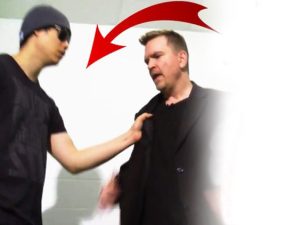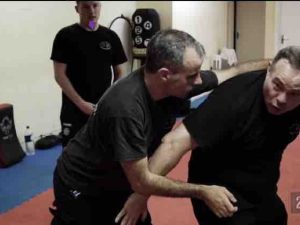Self Defense Academy
- Description
- Curriculum
- FAQ
- Reviews

Learn the unique combination of basic skills of self defense, along with the mindset and awareness required to really apply them in real life.
In this program, you will learn:
-
basics of stance and footwork
-
understanding your mindset and motivation
-
basic strike skills
-
how to diffuse a situation
-
how to use a bob dummy for training
-
gain a mental and psychological edge to beat any attacker
-
build your confidence and self esteem
-
change your behavior and attitude to make you attack-proof
and much more!
Defining fight or flight
The fight or flight response is an automatic physiological reaction to an event that is perceived as stressful or frightening. The perception of threat activates the sympathetic nervous system and triggers an acute stress response that prepares the body to fight or flee. It’s basic instinct.
The Physiology of Fight or Flight
The “fight or flight” response is perhaps one of the most iconic pieces of “science” in self-defense circles. In the 1920’s American physiologist Walter Cannon was the first to brand the fight or flight response. He discovered that there are readily occurring reactions inside the body to propel its resources to deal with danger, including violence.
In addition, fight or flight ingrains psychological aspects – effective decision-making under stress, emotional tenacity, and trusting in the capacity of our instincts. During fight or flight, the gamut of our bodily systems is functioning to keep us alive in what we sense to be an unsafe or threatening situation. It’s assessing the density of the threat – what is occurring around us and determining our options.
It trains in the most realistic setting possible to develop the solid mental preparedness we need to react and survive. However, it’s imperative to remember never to mistake your reality-based training for an actual attack. When faced with the brutal reality of a violent attacker, or intense harm, your body will experience a biochemical response that one could never entirely prepare for.
Biochemical responses influence one or all of our five senses. Here’s how it works. As mentioned, the stress response initiates in the brain. Threat signals become processed in the amygdala or the ‘fear center’ of the brain. In turn, they travel to the hypothalamus, or ‘smart control’ area of the brain, which functions like a command center, communicating with the rest of the body. Finally, it activates the nervous system, empowering us with the energy to fight or flee.
-
3The importance of Awareness
-
4The ideal natural fighting stance
-
5basic footwork drill
-
6preemptive striking
-
7what is fear?
-
8close quarter principles
-
9close quarter drill
-
10One strike drill
-
11Powerbox
-
12Defense against wild punches
-
13Head movement
-
14Benefits of palm striking vs punching
-
15Shadow fighting
-
16Overcoming fear
-
17Ego attack
How to defend yourself against someone with an inflated ego
-
18How your ego can get you killed
-
19Defense against a sucker punch
-
20neck cranking
-
21BOB - How to hit with power
-
22One arm lepel
-
23BOB - Palm strike
-
24BOB Eye gouge
-
25BOB throat strike
-
26Defense against a headbutt
-
27BOB Elbowing
-
28BOB Knee strike
-
29BOB Hammer fist
-
30BOB Clothesline
-
31two arm lapel grab
-
32Stress busting exercise
-
33Defense against a takedown
-
34Escape from a headlock
-
35Defense against a bear hug
-
36groin strike
-
37Hit and run concept








